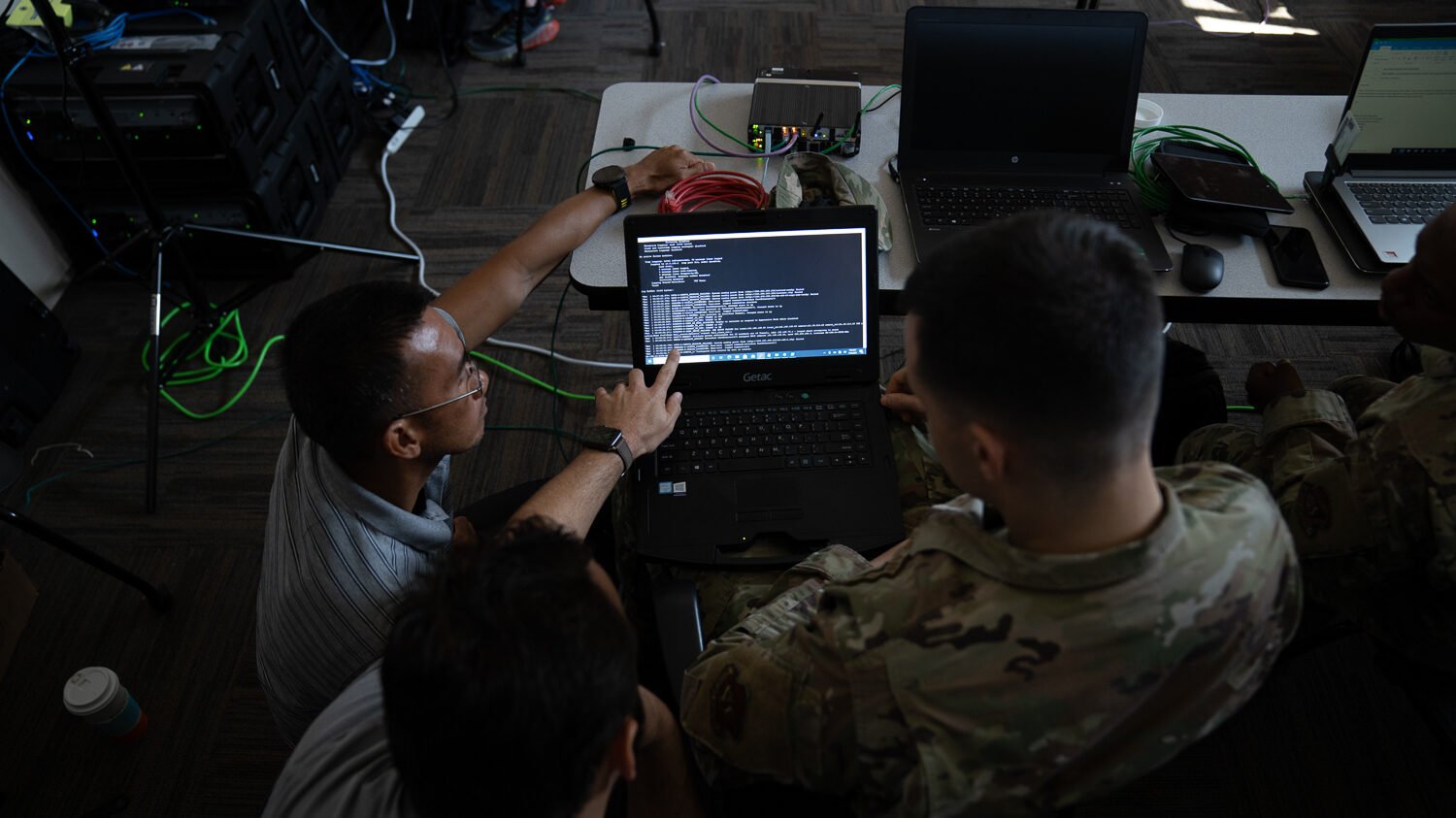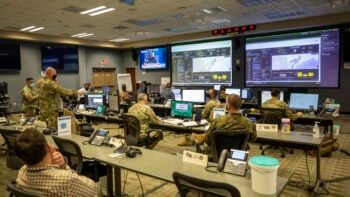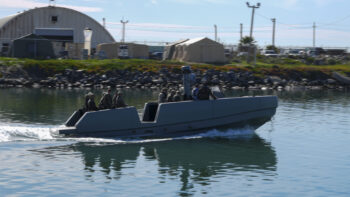
Members of the 56th Air and Space Communications Squadron operate cyber systems during the Global Information Dominance Experiment 3 and Architect Demonstration Evaluation 5 at Alpena Combat Readiness Training Center, Alpena, Michigan, July, 12, 2021. (U.S. Air Force photo by Tech. Sgt. Amy Picard)
In it’s never-ending push to more quickly adapt to an ever-changing technological landscape, the Pentagon in 2016 established the Defense Innovation Board. Since then the pace of technological evolution has only grown, and a new report [PDF] from the current board explains why today building a “data economy” is key. In this op-ed, board member Ryan Swann shares some of near-term insights into how the Pentagon can adapt to the times.
It is simply a fact that in today’s world, data is king. All our actions and reliance hinge on the core ability to access, comprehend, harness and take decisive action based on the data. For the Department of Defense this is a matter of national security.
The Pentagon is both aware of its data problems and recognizes that it can create data/AI opportunities by taking strategic and tactical actions in new and innovative ways.
This is not an unusual situation for most large and established organizations. It wasn’t all that long ago that data and IT issues were handled by people far away from the C-Suite and with very little understanding of the context. There weren’t any chief data officers, and no CEO had this on their risk mitigation plan. Fast forward to today’s threat environment, where artificial intelligence, machine learning, and data analytics does not only mean the difference between profit and loss but also affords an advantage that could potentially win wars.
This is not a new challenge for the Department of Defense. The efforts to tackle this go back several decades across multiple administrations. But we need to act now.
The Defense Innovation Board just completed and delivered an initial study on what the Department of Defense needs to do to tackle this problem. The report isn’t meant to be an exhaustive study, but it does clearly and concisely outline some actions the Pentagon can take in the near term.
First, the key to any transformation change is leadership. The report recommends empowering the chief data and artificial intelligence officer (CDAO) to achieve meaningful change in the DoD data economy by ensuring that the Pentagon’s top data and AI executive is properly postured, consistently resourced, and physically present, and has clear and measurable goals and objectives. This starts by having the CDAO in the Pentagon full time in order to advocate for continuous change within the DoD leadership and the Hill. Additionally, the CDAO must be properly funded, staffed, and receive updated clear roles and responsibilities.
This leadership challenge needs to be pushed down to the services and combatant commands, with each having a full-time and dedicated chief data officer — with no other job duties. This can’t be seen as a nice-to-have, but as a requirement to ensure the warfighter has the tools needed to be effective in combat.
One of the more interesting and potentially impactful recommendations is to create a “Data Officer” Military Occupational Specialty (MOS) to foster greater data talent within the force and provide a real career path for data professionals in the services. This action could have profound near and long-term impact to the fighting forces.
If young adults entering the workforce see an opportunity to progress in the military in a field that is not only dominating this generation but also has a clear career path post-service, our DoD has a much greater chance at attracting and retaining the talent pool we need.
In a nod to some of the innovative tools used in the private sector, the Pentagon should create environments in which DoD civilians and service members can express their innovative talents without fear of security infractions or career harm. The DoD should support more opportunities that demonstrate value from data through innovation and competition (e.g. hackathons) while providing general access to developer tools (e.g. Python) and low-code or no-code tools. There should be data on-boarding and literacy programs for new and current service members, civilians and contractors to improve data understanding and practices. These actions are normal in the private sector and should be adopted by the Pentagon.
While most of the data challenges the Department is facing deal with people and organization, technology is also key. As the Department works to integrate AI into its functions, there needs to be agreed standards that will enable disparate sources of data to be accessed, unified and leveraged without having to migrate it to a central platform. This is a key tenant of a data as a product strategy and critical for interoperability. Furthermore, creating spaces where data engineers can do research without causing security problems will help grow the innovation culture and push the entire organization towards a culture of innovation.
When taken together, these and the other actions recommended in the report can be a catalyst for creating a robust data economy at the Department of Defense that will not only protect what we have but also enable future capabilities for future warfighters.
I recognize that this is hard, if it was easy, it would have been done by now. However, our data practices are outdated, and artificial intelligence is accelerating hence we must act now to enable our military to stay competitive in a AI powered world.
Ryan Swann is a member of the Defense Innovation Board, the chief data analytics officer for The Vanguard Group and a board member of Forward Edge AI. The views expressed in this article are his personal opinions.
Services making progress putting the J in CJADC2: Vice Chief Grady
Adm. Christopher Grady, vice chair of the Joint Chiefs of Staff, said the Joint Requirements Oversight Council is “well on pace” to putting more “teeth” into its processes for driving the military services to fulfill joint requirements.


























